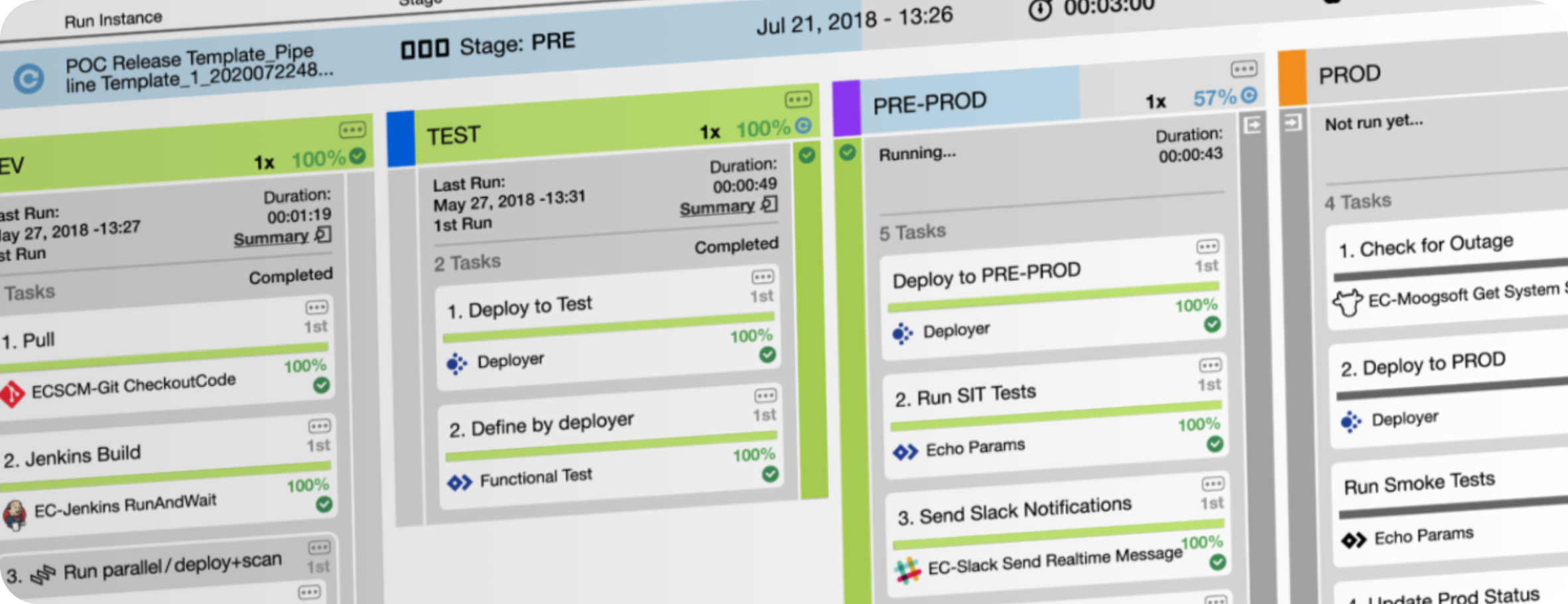Overview
The redesign of the Release Editor UI gathered good momentum from getting validation ahead of schedule, giving us confidence to review the feasibility of some elegant ideas for displaying progress status, and added flexibility with runtime options.

The Opportunity
We had a well adopted UI pattern for reading runtime progress. The idea to merge it into the Kanban framework got positive feedback from the field design partnership.
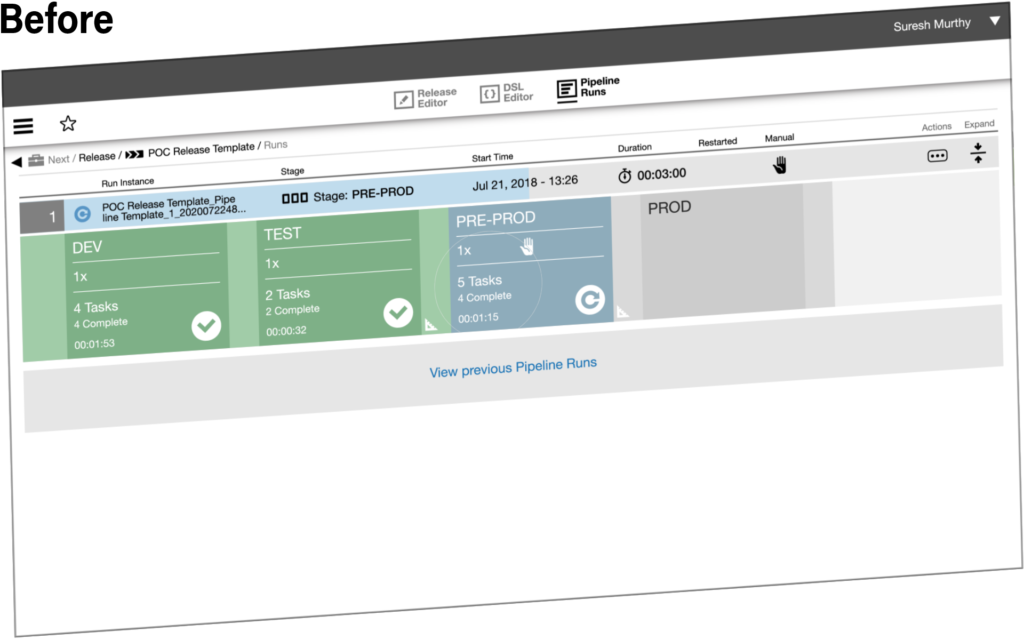
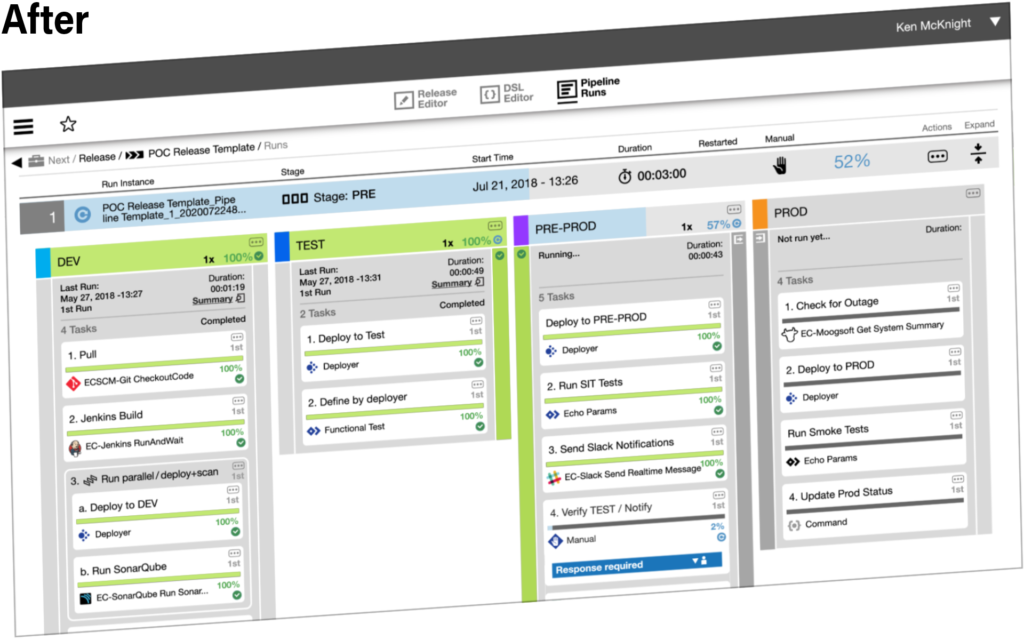
We would also be able to display additional runtime statuses at the more granular level of the Stage Task itself, which would provide unprecedented levels of control with new functionality to Pre-Run and Restart Tasks.
My role: Principal Designer
I worked in close partnership with Product and Engineering leadership. We accelerated the iteration cycles by scheduling feedback at a faster cadence. Members from the Front End development team in the Ukraine were flown into the San Jose office to allow direct collaborations and faster handoffs.
The challenge
We were introducing a significant upgrade, and the user experience needed to be cohesive, or we risked poor adoption in an area of usage known to be mission critical.
Within our 60-day development cycle, we had an imperative to implement it all, or not all. In this particular case, delivering in phases was not an option.
The approach
We previously had designed the authoring of a pipeline and the viewing of its runtime progress with separate UIs. This was an accepted visual context-change, nonetheless we could reduce the cognitive load by integrating one into the other.
Release Managers would be able to:
#1. Run a pipeline from where it is authored
#2. Run all its levels manually
#3. View all increments of progress
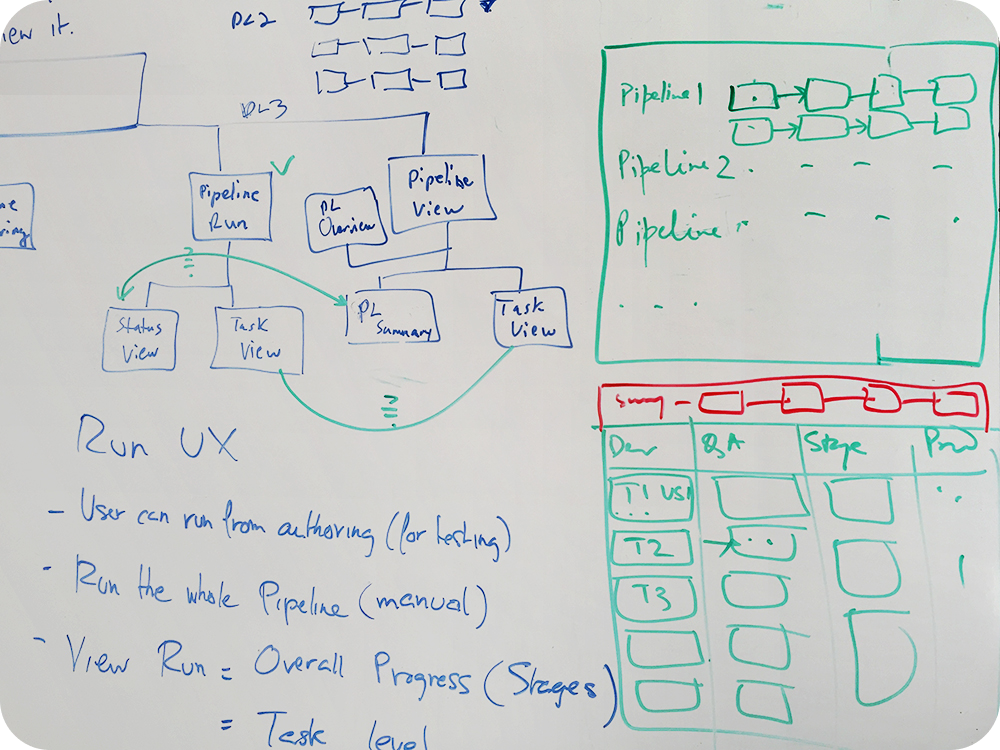
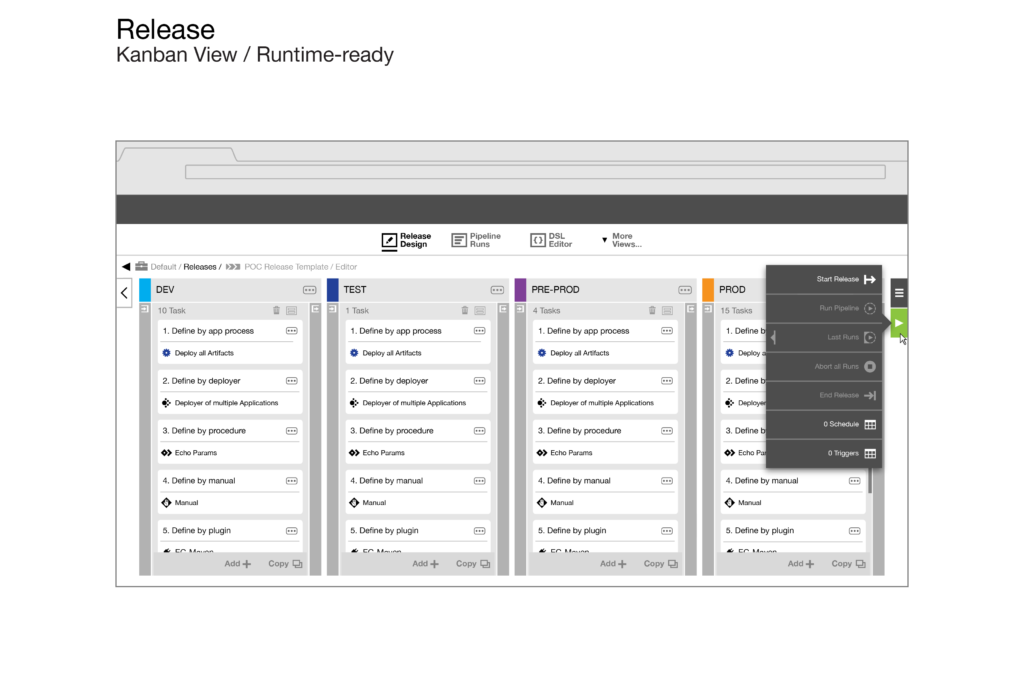
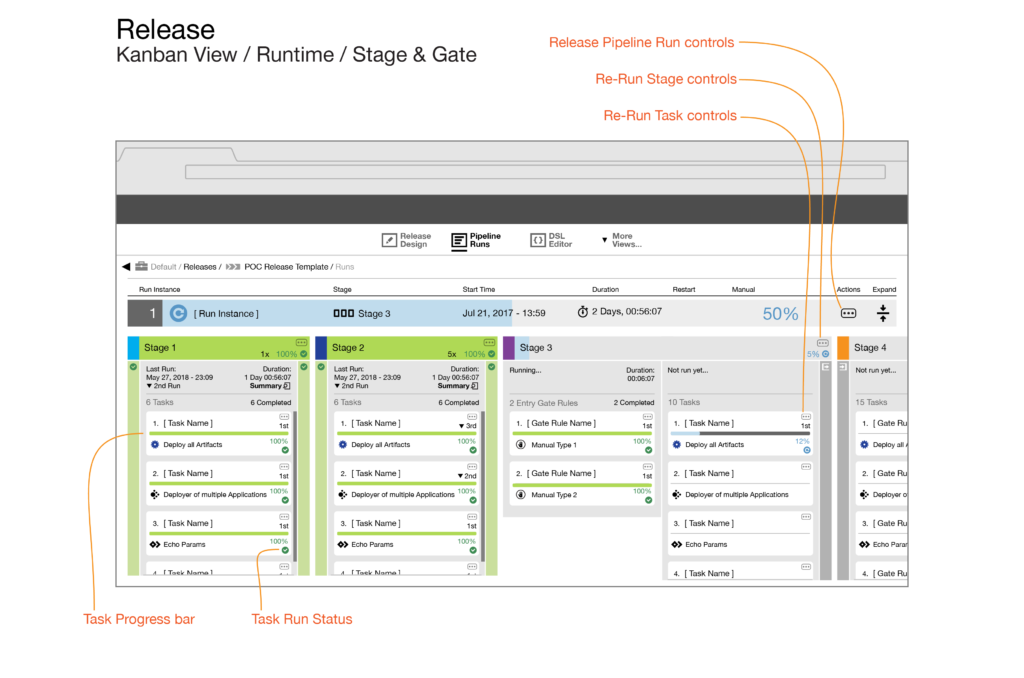
The convenience of viewing and manually controlling the runtime at all levels, engendered the design challenge of visually communicating this granularity of activity, and prompting team members to respond when the system required it.
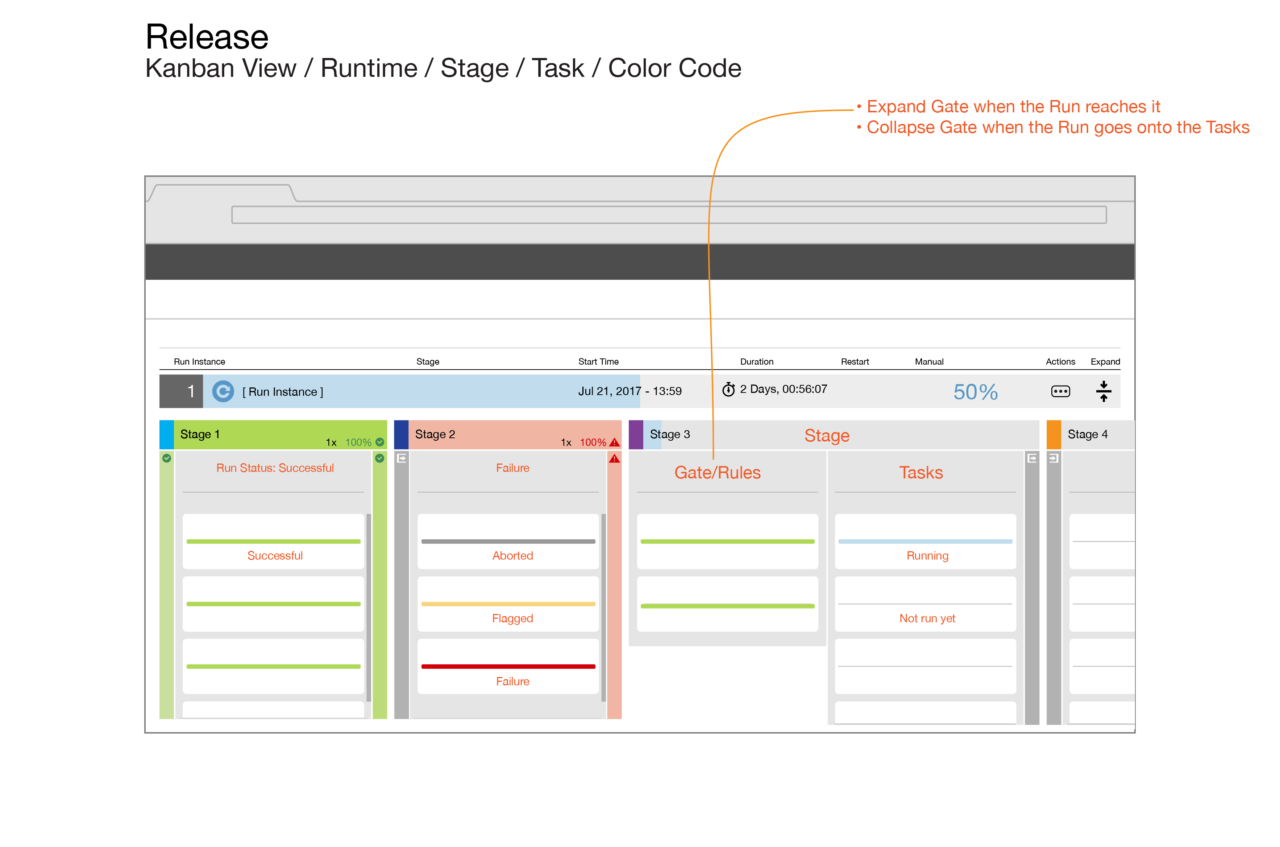
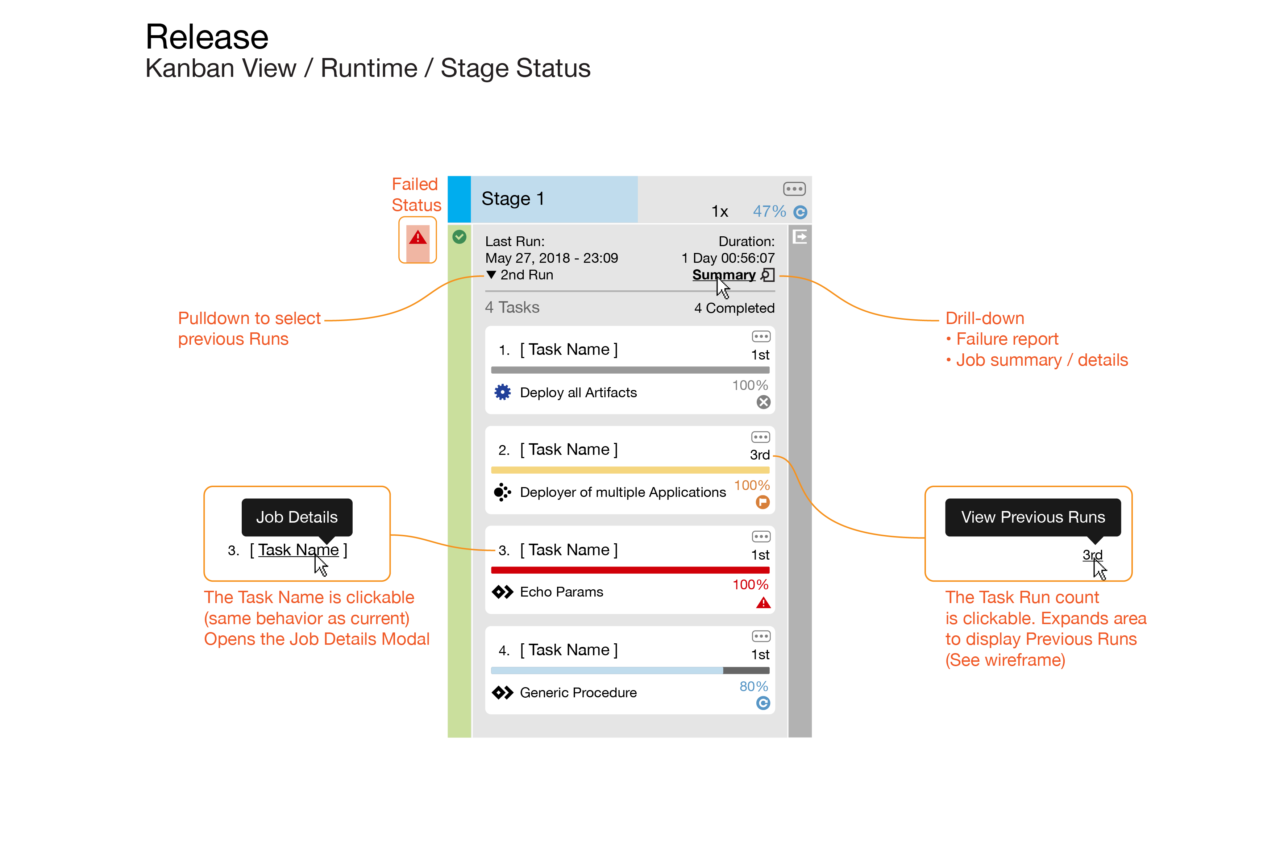
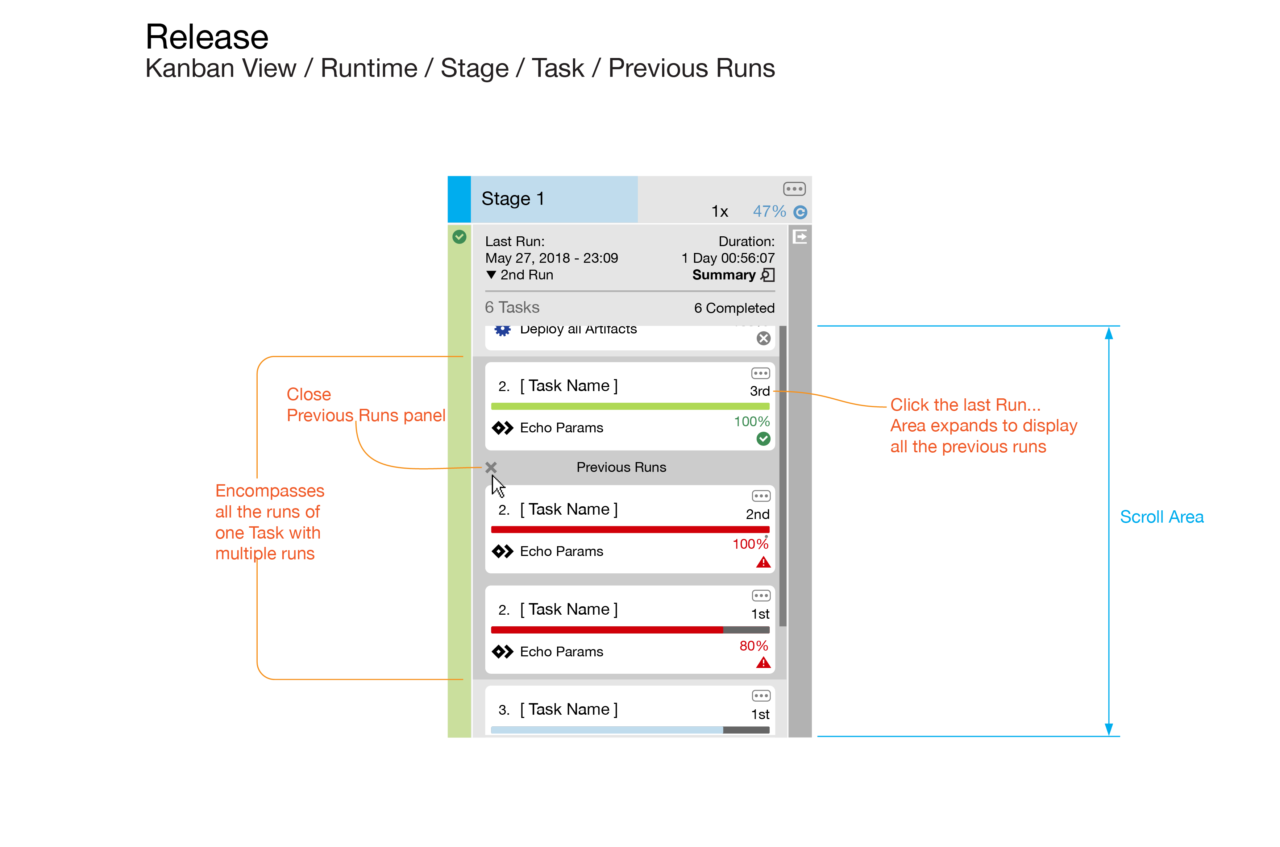
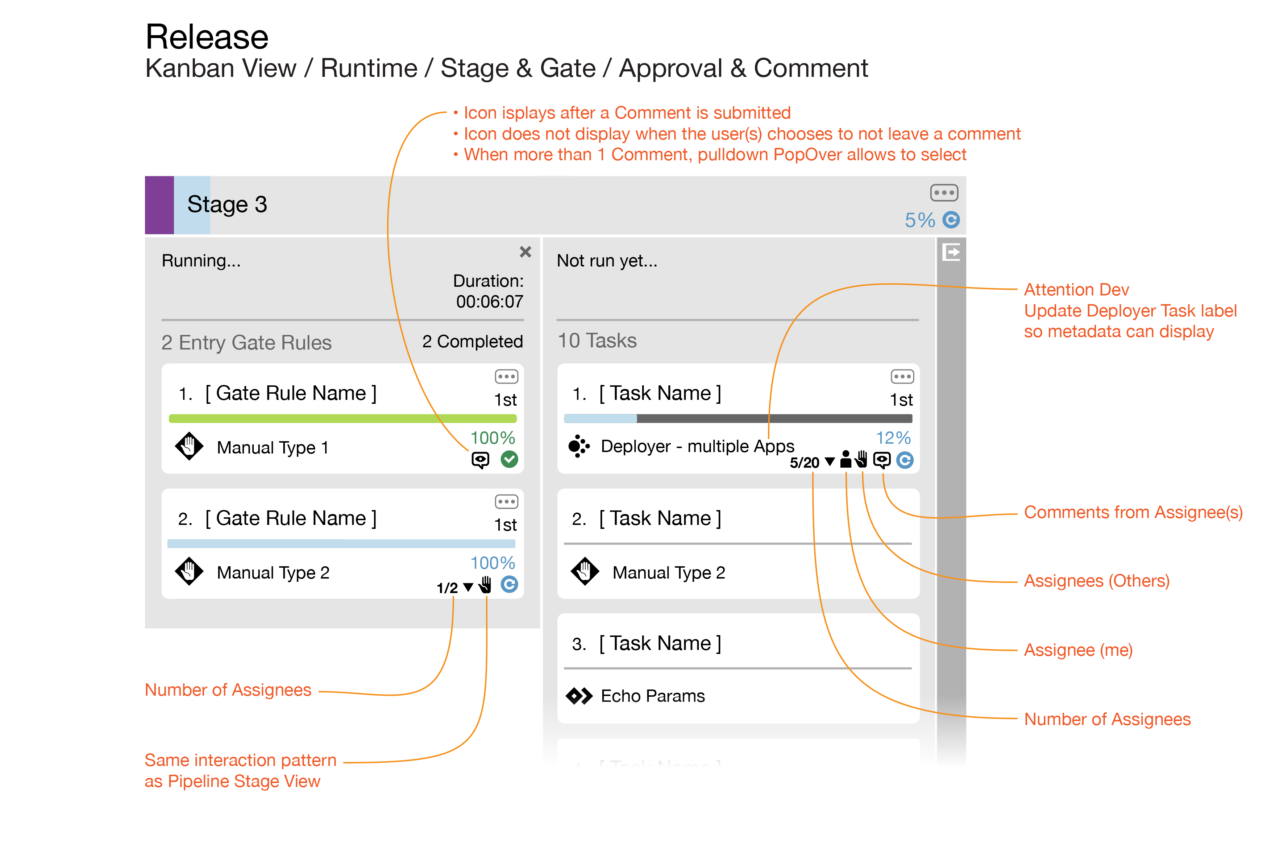

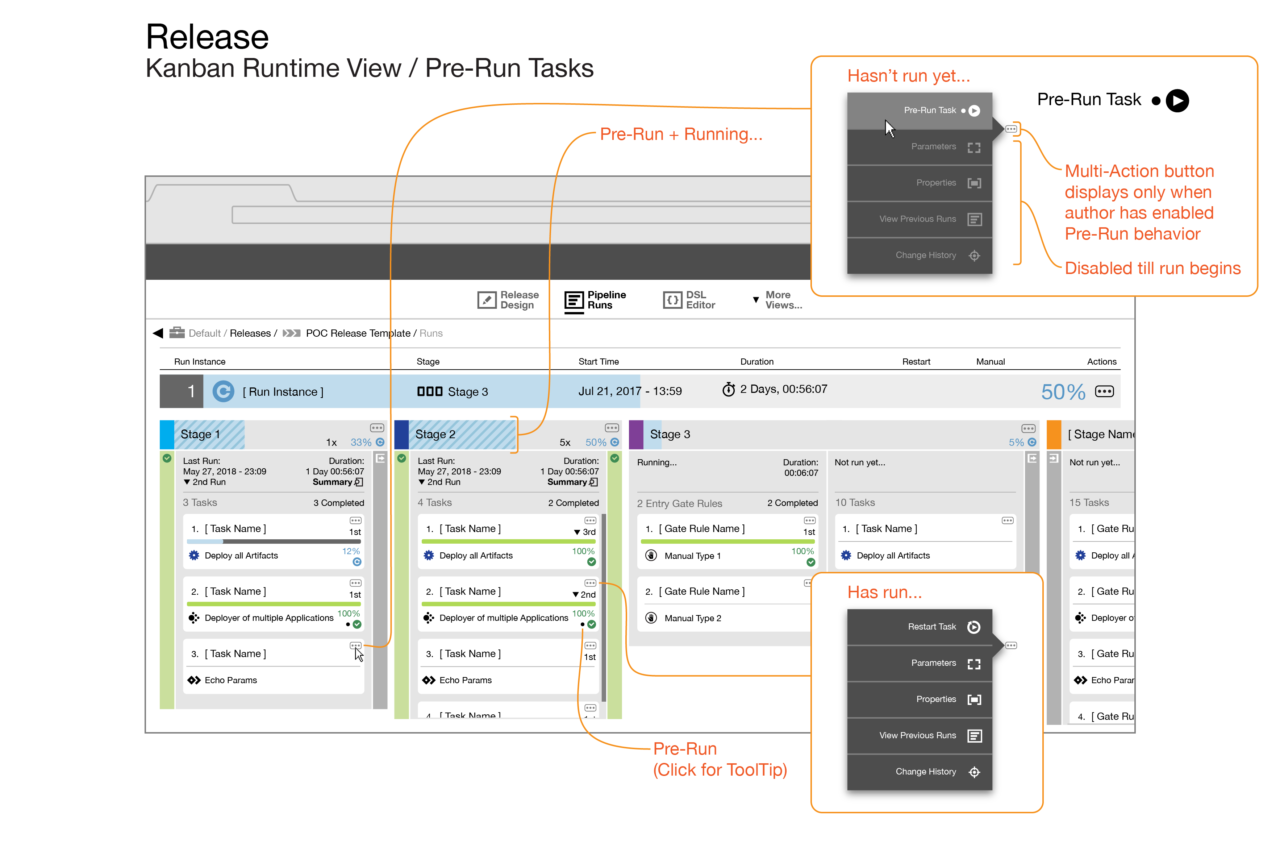
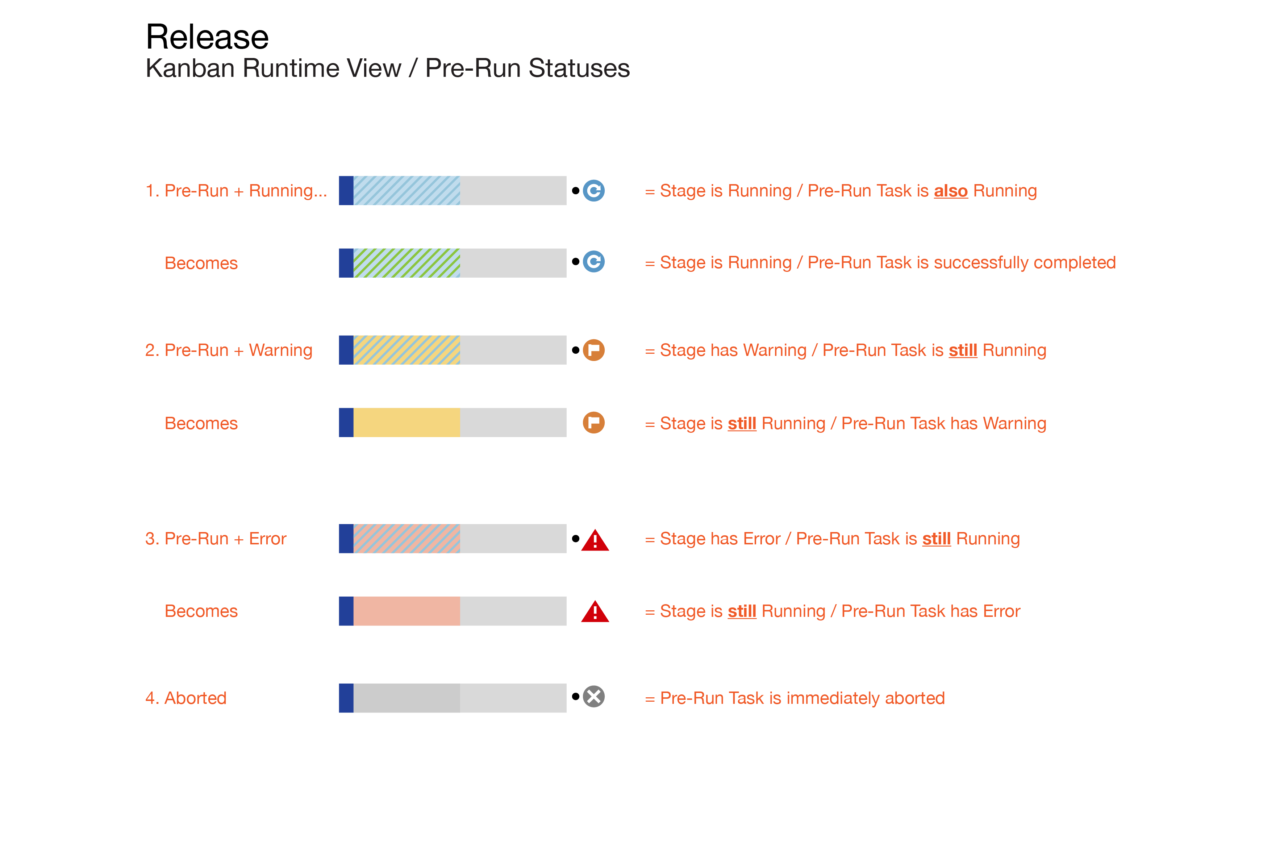
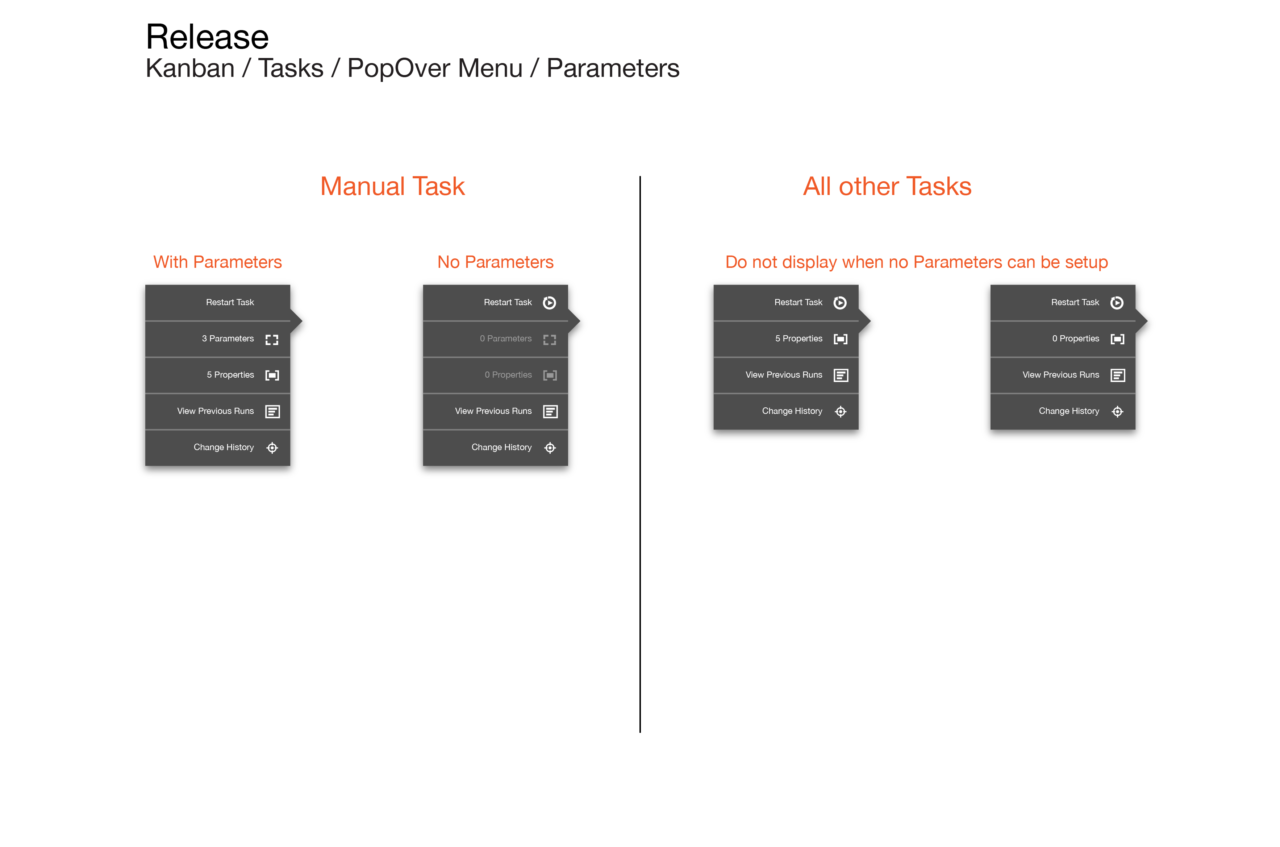
Outcome
After a period of adopting the new Kanban UI design, coupled with the optimized path to viewing and operating the pipeline runtime, teams reported measurable reductions in time to release, and increases in output.
The most important outcome is in the cultural transformation an organization experiences from teams achieving new performance milestones together.
- “Releases were reduced from 12-36 hours with 30+ people to 1 hour with 5 people”.
- “AWS deployments went from 12 hours to 20 minutes.”
- “Release cycles were reduced from 9 months to 2 weeks, even to 15 minutes.”
- “We increased monolith release speed by 50%.”
- “The team doubled its overall number of deployments”.

User Research ➜
Solutions to getting input
Consumerize Enterprise UX ➜
DevOps Web Application
Core Function UI redesign ➜
Release Automation
Innovation in DevOps UX ➜
Runtime Visualization
Data Visualization ➜
3D Network Topology
Enterprise Mobile UX ➜
Commercial Real Estate Sales
Short Stories + Interactivity ➜
Branded Episodic Content
